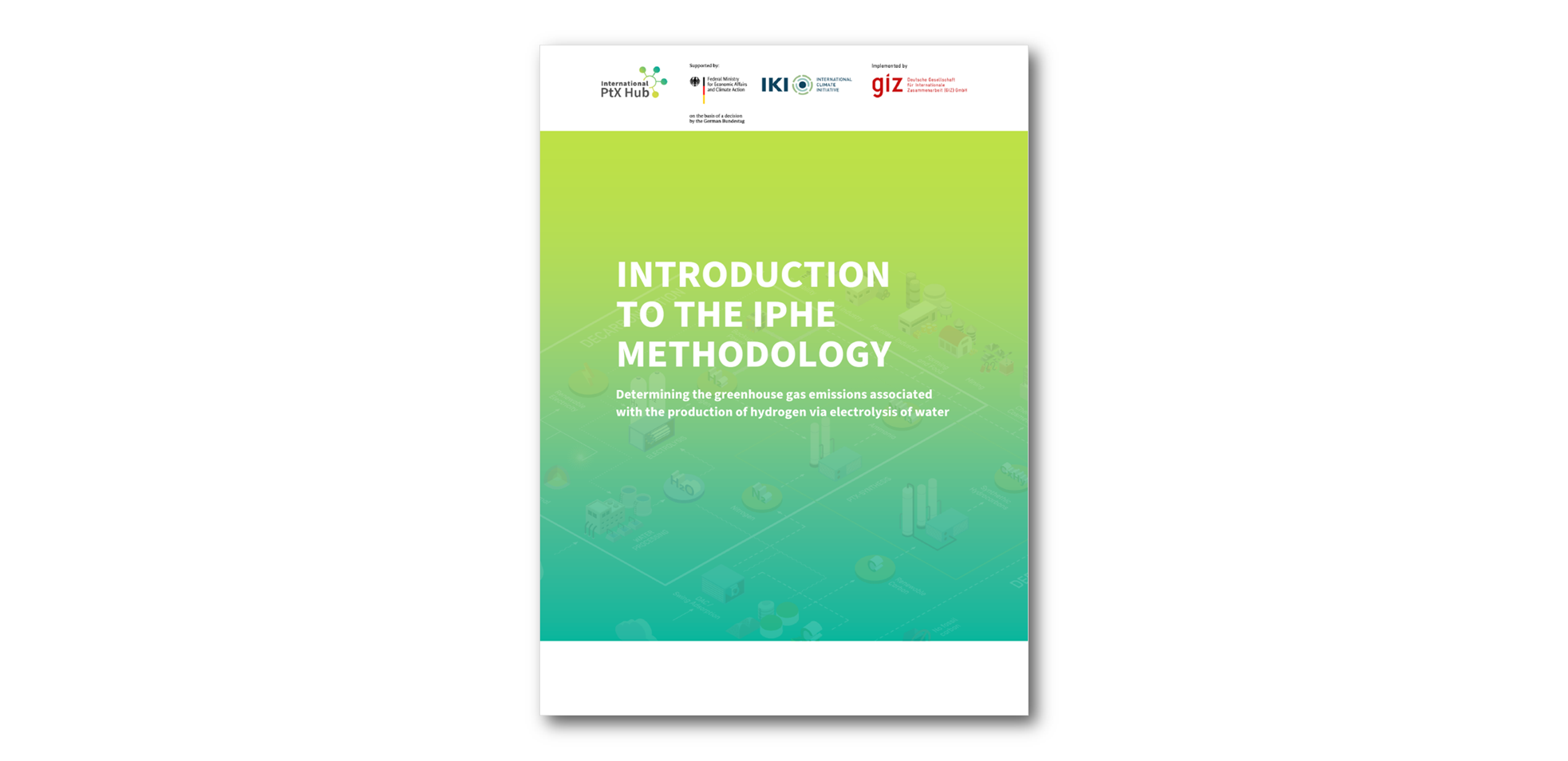As a commonly agreed-upon reference framework, a method to determine the greenhouse gas (GHG) emissions associated with hydrogen production is a starting point needed for certification. The International Partnership for Hydrogen and Fuel Cells in the Economy (IPHE) provides an approach on how to calculate GHG emissions for hydrogen production as well as conditioning and conversion of hydrogen. Our new briefing presents content, context, and relevance of the IPHE methodology.
The International Organization for Standardization (ISO) aims at developing an international standard on the basis of the IPHE methodology. Already now, the IPHE methodology is used in voluntary schemes and standards such as the Green Hydrogen Standards by the Green Hydrogen Organisation (GH2) or the Australia Clean Energy Regulator Hydrogen Guarantee of Origin as a guidance on how to calculate the GHG intensity of products.
Information provided in this briefing focusses on the production of hydrogen from electrolysis of water using electricity. However, the IPHE methodology also describes methods to determine GHG emissions for other hydrogen production pathways.
The main questions discussed in this briefing are:
- What is the IPHE methodology and to which extent could it become relevant?
- Which provisions are made and what is the overall scope of the methodology?
- What data needs to be reported by hydrogen producers?
- What are possible shortcomings of the methodology and how could they be addressed?
The briefing was conducted by Oeko-Institut under the umbrella of the International PtX Hub.
Interested in certification? Read our introduction to certification for green hydrogen and PtX here.
